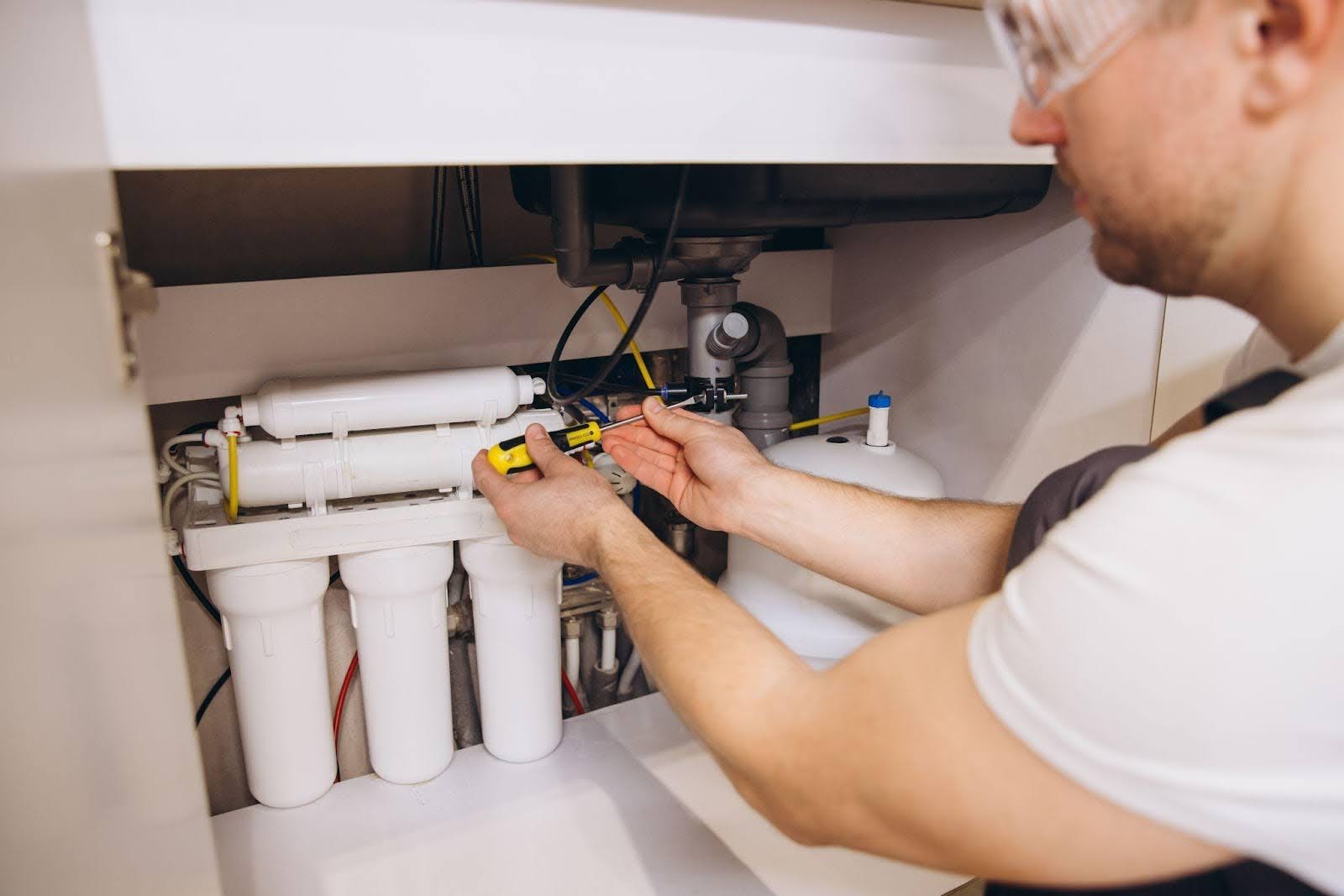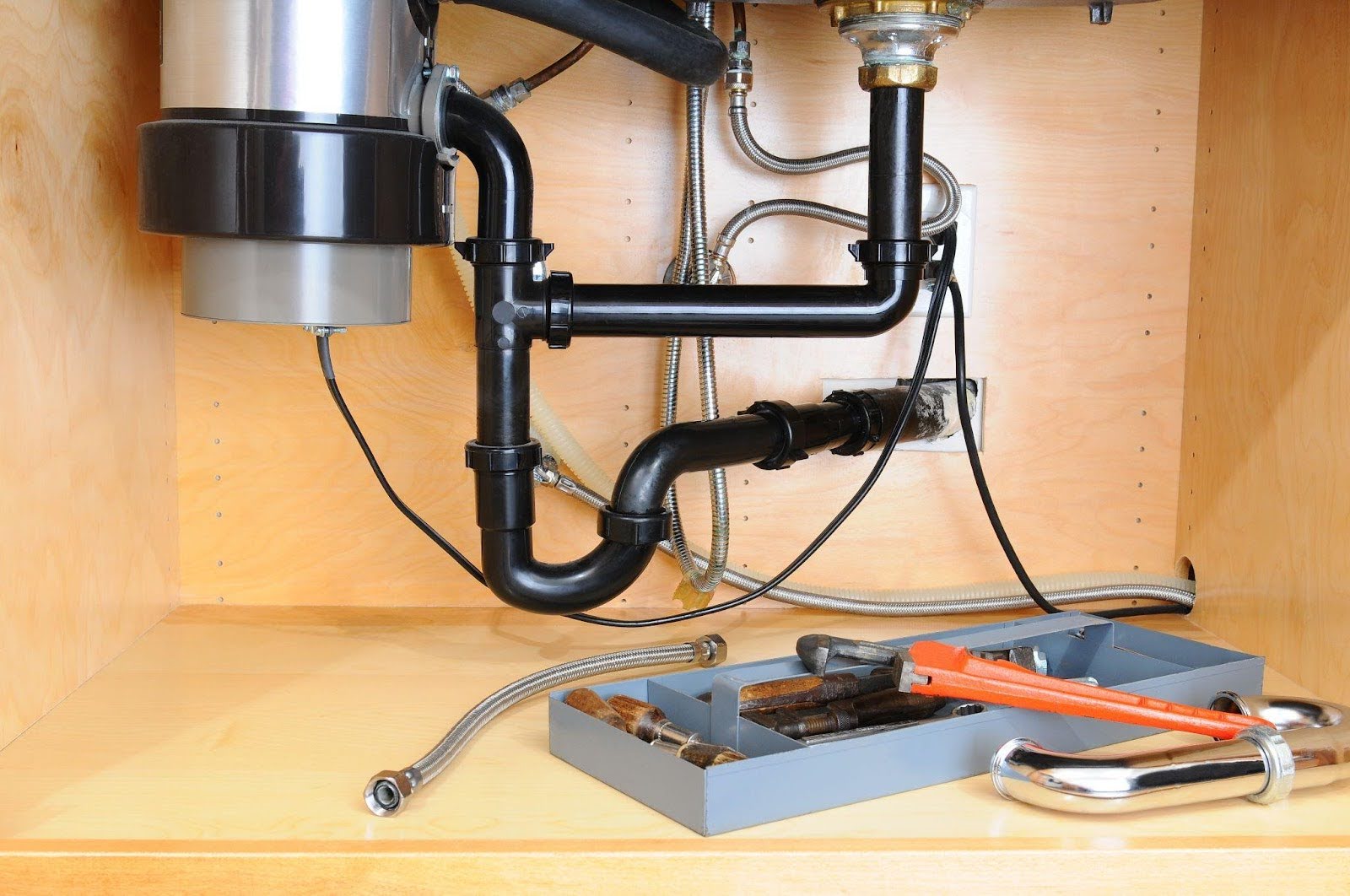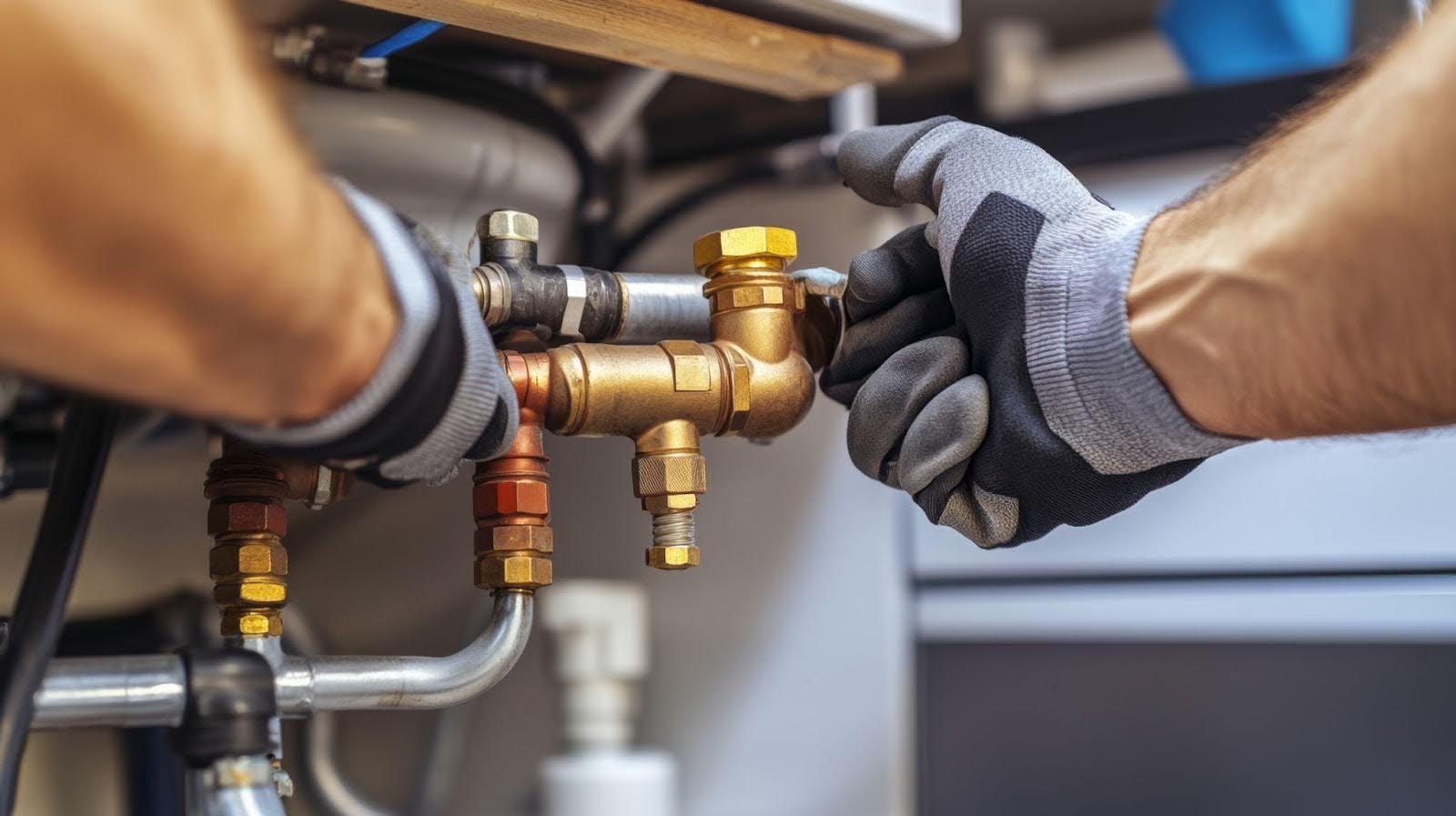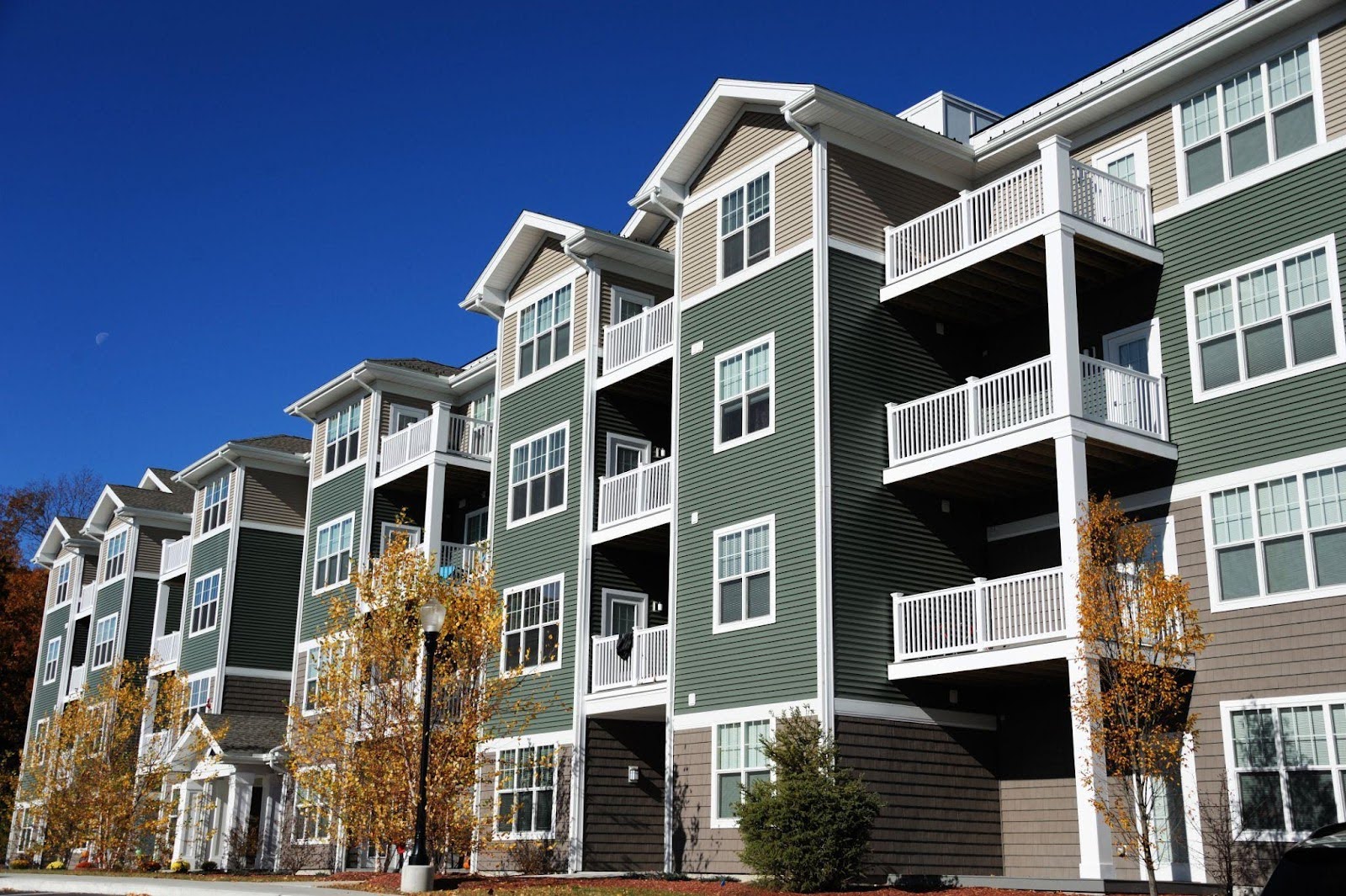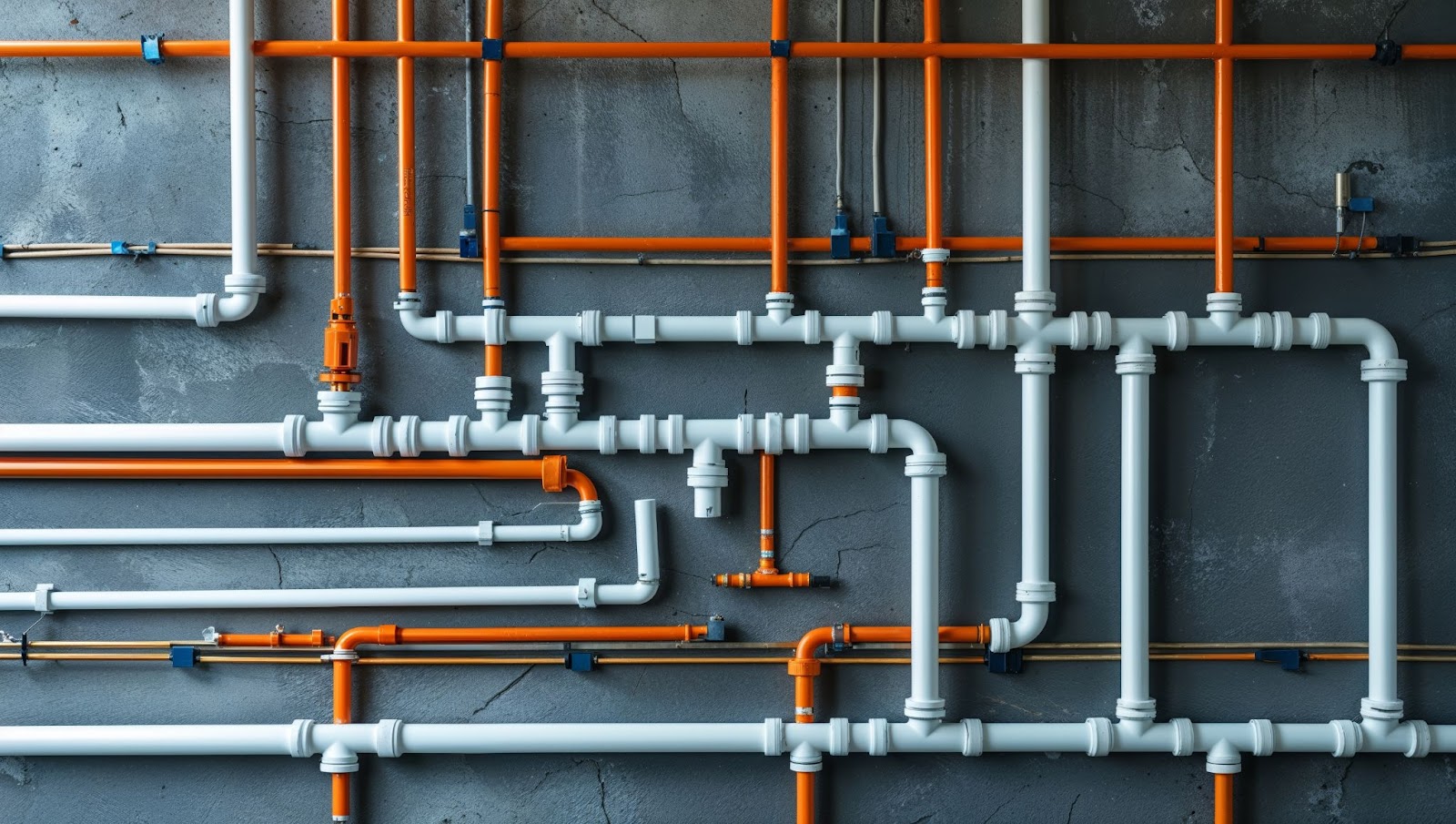We rely on our hot water heaters day in and day out, often without giving them a second thought — until, of course, something goes amiss. A sudden cold shower or a mysterious puddle near the heater quickly catapults this unsung hero of household comfort into the forefront of our concerns.
Understanding the signs of water heater problems and knowing how to address them can mean the difference between a minor fix and a major fiasco.
In this blog, we’ll dive into the most common indicators of water heater problems and offer expert advice on what to do next. Whether you’re facing a minor hiccup or contemplating a major overhaul, this guide is here to illuminate the path forward.
5 Signs Your Water Heater Is Failing
Whether it’s inconsistent water temperatures or discolored water, understanding the signs that your water heater might be failing will help you catch it sooner rather than later.
Sign 1: Inconsistent Water Temperatures
A water heater’s primary function is consistently providing hot water at the desired temperature. When you start experiencing fluctuations in water temperature without making any adjustments, it’s a clear sign that something is wrong with your water heater.
Thermostat Issues
The thermostat controls the temperature of the water inside the tank. If it becomes faulty or malfunctions, it might cause the water to become either too hot or too cold. Sometimes, recalibrating or replacing the thermostat can resolve this issue.
Sediment Buildup
Over time, minerals from the water accumulate at the bottom of the tank. As this sediment layer thickens, it sometimes acts as a barrier between the water and the heater’s burner (in gas heaters) or heating element (in electric heaters), making it harder for the heater to warm the water effectively. The result is often warm water that quickly turns cold as the heater struggles to maintain the desired temperature.
Heating Element Failure
In electric water heaters, if one of the two heating elements (usually the lower one) fails, it can lead to inconsistent temperatures. You might find that your water is only lukewarm instead of hot or fluctuates between cold and hot as the single functioning element struggles to compensate.
Deteriorating Dip Tube
The dip tube directs incoming cold water to the bottom of the tank, allowing the hot water to be drawn from the top. If this tube breaks or deteriorates, cold water might mix with the hot water at the top, causing sudden temperature drops when you expect steady hot water.
Sign 2: Discolored or Rusty Water
Clean, clear water is what every homeowner expects when they turn on a faucet. However, if you notice discolored or rusty water, especially when drawing hot water, it could be a warning signal about the condition of your water heater.
Corrosion Inside the Tank
Water heaters are primarily made of steel, which contains iron. Over time, the constant exposure to water might cause the interior lining of the tank to corrode.
As the corrosion progresses, rust can form, mixing with the water, leading to rusty or brownish discoloration. This rusting process indicates that the tank’s integrity is compromised and might be nearing failure.
Sacrificial Anode Rod.
Designed to protect the tank from corrosion, the sacrificial anode rod attracts the corrosive elements in the water. It’s called “sacrificial” because it’s meant to corrode instead of the tank.
However, as this rod deteriorates over time, its ability to protect the tank diminishes. When the rod is significantly degraded, the tank begins to rust, which can taint the water. Regularly checking and replacing the anode rod can prevent the tank from rusting.
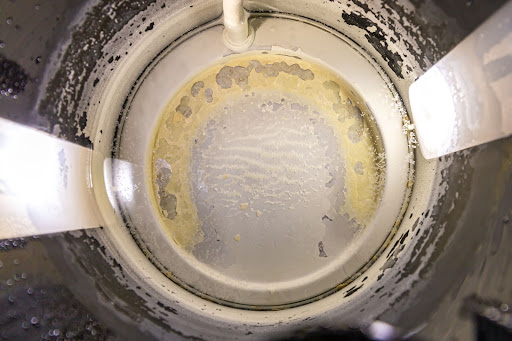
Sediment Buildup
While sediment buildup causes temperature inconsistencies, it also discolors the water. Minerals like calcium and magnesium accumulate at the tank’s bottom. When these minerals get agitated — like when water rushes in or the heating element activates — they can mix with the water. This might not result in a rusty color but may give the water a muddy or sandy appearance.
Old Pipes
It’s also worth noting that rusty water doesn’t always indicate a problem with the water heater. Aging galvanized iron pipes can rust on the inside, causing discolored water. If the rusty water is coming from both the hot and cold faucets, it might be an issue with your pipes and not the heater.
Sign 3: Rumbling or Popping Noises
When you think of your water heater, a quiet and steady operation usually comes to mind. However, if you start hearing rumbling, popping, or crackling sounds emanating from it, it’s time to take notice, as these noises may indicate underlying issues like sediment buildup, scale on heating elements, metal fatigue, or pressure fluctuations.
Sediment Buildup
Over time, minerals like calcium and magnesium precipitate out of the water and settle at the tank’s base. When the heating element or burner activates to heat the water, these sediments often get superheated, leading to the water trapped beneath them turning into steam.
As these steam bubbles rise through the cooler water layer above, they produce the rumbling or popping sounds you might hear.
Scale on Heating Elements
In electric water heaters, if mineral deposits form a layer on the heating elements, they’ll cause a sizzling or hissing sound. This is because the scale acts as a barrier, causing the heating element to overheat, leading to the water boiling directly on the element itself.
Metal Fatigue
Constant heating and cooling can cause the metal tank to expand and contract. Over time, this leads to metal fatigue. A rumbling or moaning sound, especially as the tank heats, might indicate this fatigue, suggesting that the tank has aged significantly.
Pressure Fluctuations
Sometimes, the sounds are from the expansion or contraction of the tank due to pressure changes within. While a certain amount of pressure change is normal, excessive pressure can be dangerous. If accompanied by a persistent loud knocking sound, it’s worth checking the pressure relief valve to ensure it’s functioning correctly.
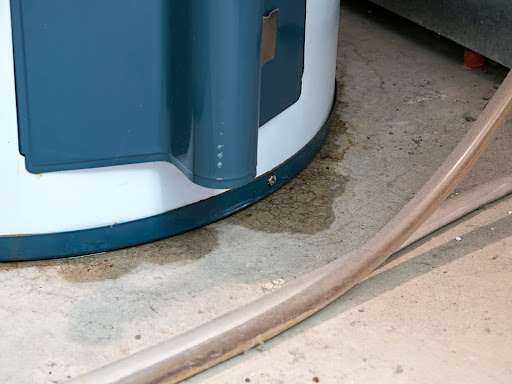
Sign 4: Water Around the Heater
Spotting water around the base of your water heater should immediately grab your attention. Pooled water or dampness in the vicinity of the unit clearly indicates that something is wrong. Here’s why water around the heater is concerning:
Tank Leaks
Over time, metal fatigue, corrosion, or the constant expansion and contraction from heating cycles lead to small cracks or fractures in the water tank. Initially, these leaks might be tiny, dripping water sporadically, but it’s possible for them to widen and worsen over time, potentially leading to significant water loss or sudden, catastrophic tank failure.
Faulty Valves
Water heaters come equipped with several valves, including the pressure relief valve and the drain valve. These valves might occasionally malfunction or become leaky. For instance, a pressure relief valve might release water if the pressure inside the tank becomes too high. Or it might leak if it becomes faulty.
Loose Fittings or Connections
The water heater’s inlet and outlet connections or the connections to the temperature and pressure relief valve might become loose over time or might not have been properly sealed. This can result in minor drips or leaks, causing water accumulation around the unit.
Condensation
In some cases, the water might be from condensation on the heater’s surface, especially if the cold water entering the tank is much cooler than the surrounding air. While this might not indicate a direct fault with the water heater, excessive condensation is still problematic, as it can lead to water damage or mold growth around the area.
Aged Unit
Older water heaters are naturally more prone to issues, including leaks. If your unit has been serving for many years, nearing or surpassing its typical lifespan, the likelihood of encountering leaks or other problems increases.
Sign 5: Age of the Unit
Just like any other appliance, a water heater doesn’t last indefinitely. As it ages, the likelihood of encountering operational issues increases. The unit’s age can directly influence its performance, efficiency, and reliability in several ways:
Material Deteriorating
Over years of continuous service, the internal materials of the water heater will wear down. For instance, metal tanks corrode over time, especially if the sacrificial anode rod isn’t replaced when needed. This corrosion eventually leads to leaks or even a tank rupture.
Component Wear and Tear
Many components, like heating elements in electric heaters, burners in gas heaters, thermostats, and valves, wear out or malfunction over time. As the unit ages, the chances of one or more of these components failing increase, leading to reduced performance or complete breakdowns.
Reduced Efficiency
Older units might not be as energy-efficient as newer models. Advancements in technology and stricter energy standards mean that newer water heaters often outperform older counterparts in terms of energy usage. Hence, an aged unit will lead to higher energy bills.
Obsolete Parts
With very old water heaters, finding replacement parts for repairs becomes a challenge. Manufacturers might discontinue certain parts, making repairs more complicated and costly.
And What to Do About It
When faced with water heater problems, it’s essential not to ignore the issues. Addressing water heater problems promptly helps prevent further complications, saves you money, and ensures your household’s safety. Here’s what you should do if your water heater is malfunctioning.
1. Turn Off the Power and Water Supply
If you notice a significant issue, especially a leak or unusual sounds, it’s safest to shut off the water heater’s power supply. For electric heaters, switch off the power at the circuit breaker. For gas heaters, turn off the gas supply. Additionally, shut off the water supply to the unit.
2. Document the Issues
Take note of any abnormalities, such as noises, the appearance of water, discolored water, or temperature fluctuations. Taking photos or videos is helpful for technicians or if the unit is under warranty.
3. Review Your Warranty
If your hot water heater is relatively new and malfunctioning, check its warranty. Some issues might be covered, allowing for free or discounted repairs or even a full replacement.
4. Contact a Professional
While you can perform some minor maintenance tasks, like flushing sediment from the tank, it’s advisable to contact a professional for most issues. They can diagnose the exact problem, advise on the best course of action, and make necessary repairs.

Contact the Professionals at Salisbury Plumbing
Encountering hot water heater issues or any plumbing concern easily feels daunting. But remember, you don’t have to face it alone. Salisbury Plumbing has been the go-to expert for countless homeowners, offering prompt, reliable, and top-notch service.
Whether you’re in need of a simple repair, comprehensive maintenance, or considering a full system upgrade, our experienced team is here to guide and support you every step of the way.
Don’t let plumbing problems disrupt your peace of mind. Reach out to Salisbury Plumbing today — where we turn your plumbing issues into smooth-flowing solutions!
toto slot


